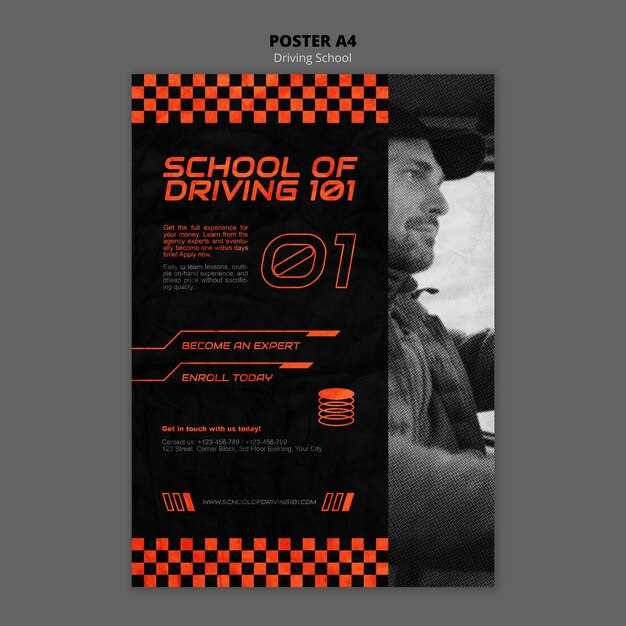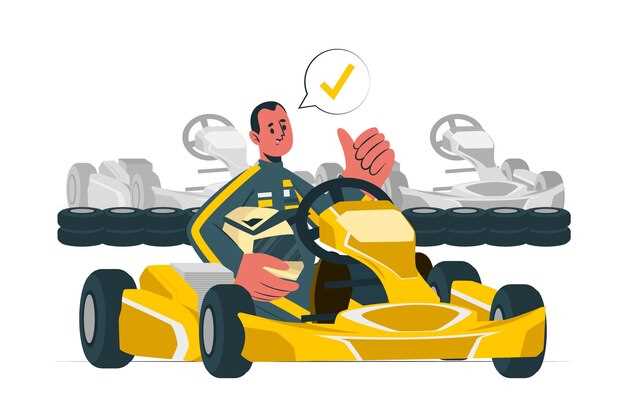
Racing Licenses – What You Need to Compete
- George Harris
- 0
- Posted on

Entering the world of motorsport is a thrilling prospect for many aspiring drivers, but it comes with specific obligations and regulations. One of the fundamental prerequisites for participating in competitive racing is obtaining a valid racing license. These licenses are not just a formality; they represent a commitment to safety, skill development, and adherence to the sport’s ethical standards.
Racing licenses vary significantly depending on the type of motorsport discipline, be it karting, rally, or circuit racing. Each governing body, such as the FIA (Fédération Internationale de l’Automobile) or various national motorsport organizations, establishes its own set of requirements to ensure that competitors are adequately trained and prepared for the challenges of racing. Understanding these requirements is crucial for anyone looking to advance their racing career.
In this article, we will delve into the essential requirements for obtaining a racing license, highlighting the necessary qualifications, training programs, and the significance of each step in the licensing process. By the end, competitors will have a clearer understanding of what it takes to legally and safely navigate the thrilling world of motorsport.
Understanding Different Types of Racing Licenses

Racing licenses serve as essential credentials for participants in various motorsport disciplines. Different types of licenses reflect the level of competition and the specific requirements needed to ensure safety and skill competence. The primary categories of racing licenses include amateur, semi-professional, and professional licenses, each tailored to varying levels of experience and competition.
Amateur racing licenses are generally the entry-level credentials for novice racers. They allow individuals to participate in regional or local events. Requirements for obtaining an amateur license often include passing a written test on safety rules and regulations, completing a specified number of practice laps, and demonstrating basic driving proficiency. This license category aims to cultivate new talent while ensuring that individuals understand fundamental racing principles.
Semi-professional racing licenses cater to competitors who have gained experience through amateur racing and wish to advance. These licenses typically require participants to have completed a certain number of races, achieved specific performance benchmarks, and sometimes, additional training or certification courses. A semi-professional license enables competitors to participate in higher-level events, often including regional championships and some national series.
Professional racing licenses are designed for seasoned competitors who intend to race at the highest level. Obtaining a professional license usually involves a rigorous application process, including verification of prior racing experience, successful completion of a professional training program, and often achieving a specified number of race wins or podium finishes. This license permits entry into elite competitions, such as national championships and international series, where the stakes and competition intensify significantly.
In addition to these primary categories, there are specialized licenses for specific racing formats, such as rally, drag racing, or touring car racing. Each of these disciplines has unique requirements and guidelines tailored to their respective environments. Competitors must ensure they understand the specific prerequisites of the racing discipline they wish to engage in, as guidelines can vary widely across organizations and geographical regions.
Furthermore, many racing governing bodies require periodic renewal and reassessment of licenses to maintain safety standards and ensure that competitors remain informed about the latest regulations and technologies. Drivers are encouraged to participate in ongoing education and skill development, which is often a stipulation for license renewal.
Step-by-Step Guide to Obtaining Your Racing License
Obtaining a racing license is an essential step for any aspiring race driver. This guide outlines the necessary steps to secure your license, ensuring you meet all requirements for a successful application.
1. Understand the Types of Racing Licenses
Before beginning the application process, familiarize yourself with the different types of racing licenses available. Common categories include amateur licenses, professional licenses, and specific licenses for various racing series. Each type has distinct prerequisites based on your experience, age, and the type of racing you intend to participate in.
2. Check the Requirements of Your Racing Organization
Different racing organizations have varying requirements for their licenses. Visit the official website of the governing body you plan to race under, such as the FIA or local motorsport associations, to review their specific criteria and guidelines.
3. Complete a Racing School
Enroll in an accredited racing school to acquire the necessary skills and knowledge. These programs often culminate in a certification that demonstrates your competence behind the wheel. Choose a school that is recognized by the organization you are applying for to ensure your training is valid.
4. Obtain a Medical Examination
A medical examination is often required to ensure that you are fit to race. Find a certified physician familiar with motorsport health standards and complete the required tests. Ensure you obtain a medical certificate that meets the specifications set by the racing body.
5. Complete the Application Form
Once you have met all prerequisites, fill out the application form provided by the racing organization. Be thorough and accurate with your information. Incomplete or incorrect applications can result in delays or rejection.
6. Submit Your Application and Fees
Submit your completed application form, along with any required documents, such as your racing school certification and medical examination results. Ensure you include the necessary fees associated with the application process. Keep a copy of your submission for your records.
7. Wait for Approval
After submitting your application, there will be a waiting period during which the organization processes your request. This timeframe may vary, so check the organization’s website for estimated processing times.
8. Receive Your Racing License
Upon approval, you will receive your racing license. This document enables you to participate in sanctioned races. Familiarize yourself with the rules and regulations associated with your license to ensure compliance during competitions.
9. Maintain Your License
To keep your license valid, adhere to any renewal requirements. This may include continuing education, additional medical examinations, or participating in a specified number of races within a set time frame.
By following these steps diligently, you will be on your way to obtaining your racing license, paving the path for your journey into the world of competitive racing.
Common Pitfalls to Avoid During License Application

When applying for a racing license, many competitors stumble upon several common pitfalls that can delay or even derail their application process. Recognizing and avoiding these pitfalls is crucial for a successful application.
One major mistake is insufficient preparation of required documents. Each racing organization typically has specific documentation requirements, including proof of previous racing experience, medical certifications, and identification. Failing to provide complete or correctly formatted documentation can result in delays or outright rejections.
Another common issue is not adhering to deadlines. Many organizations have strict timelines for submitting applications and accompanying documents. Missing these deadlines can invalidate your application, forcing you to wait until the next application period or event.
Inaccurate or incomplete forms can also lead to complications. It is essential to read each question carefully and provide clear, truthful responses. Omissions or errors can raise red flags and lead to further scrutiny and potential denial of your license.
Overlooking the necessity of a medical examination is yet another pitfall. Many racing authorities require competitors to undergo a comprehensive medical check-up. Failing to secure a current medical clearance can automatically disqualify an applicant.
Additionally, neglecting to understand the specific requirements of different racing categories can cause confusion. Various classes of racing may have unique licensing prerequisites, and assuming they are all the same can result in missed qualifications.
Seeking assistance and failing to ask for clarification when needed can impede progress. If you encounter uncertainty about the application process, reaching out to the licensing organization for guidance is recommended.
Finally, underestimating the importance of preparation for practical assessments is a mistake. Many licensing processes include driving tests or other evaluations that may require practice and readiness to pass successfully.
